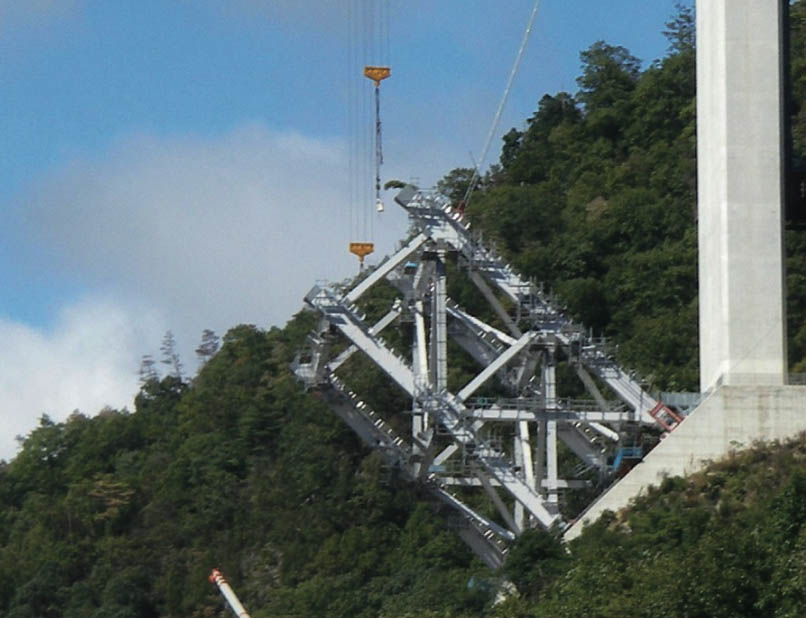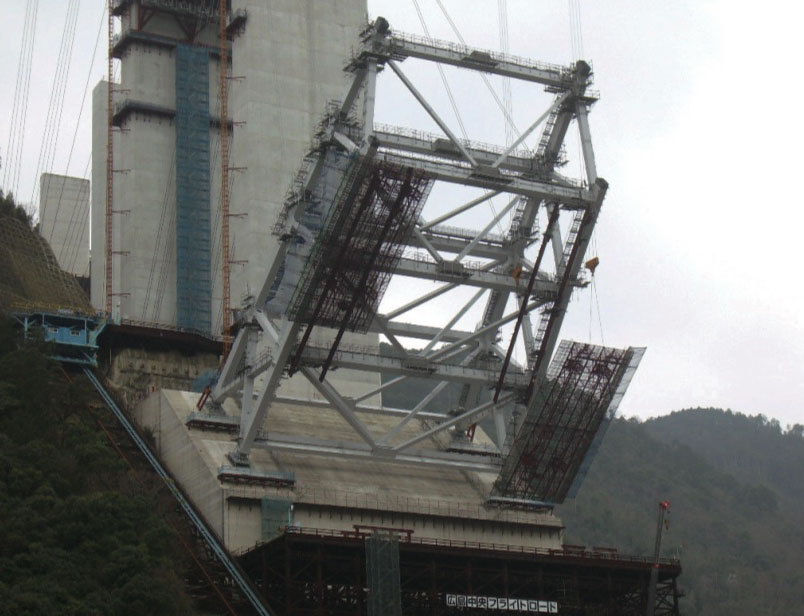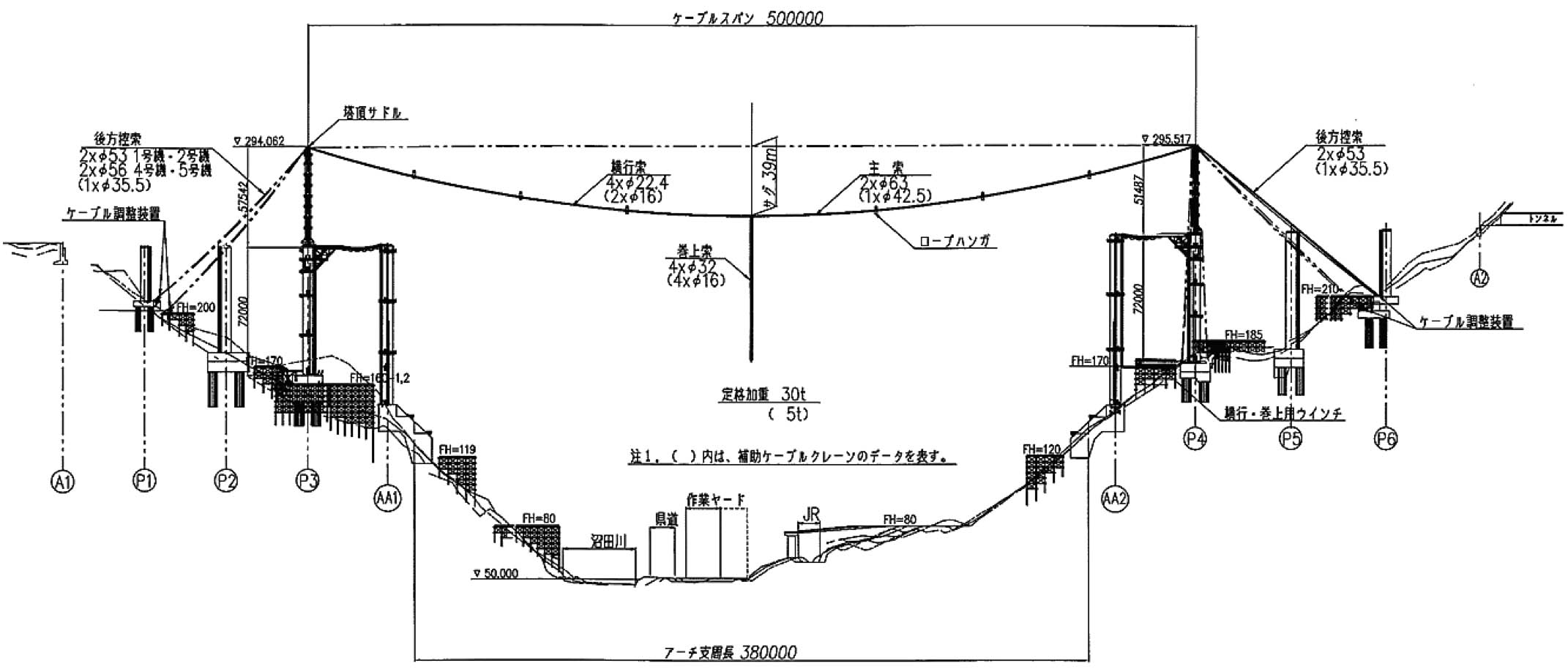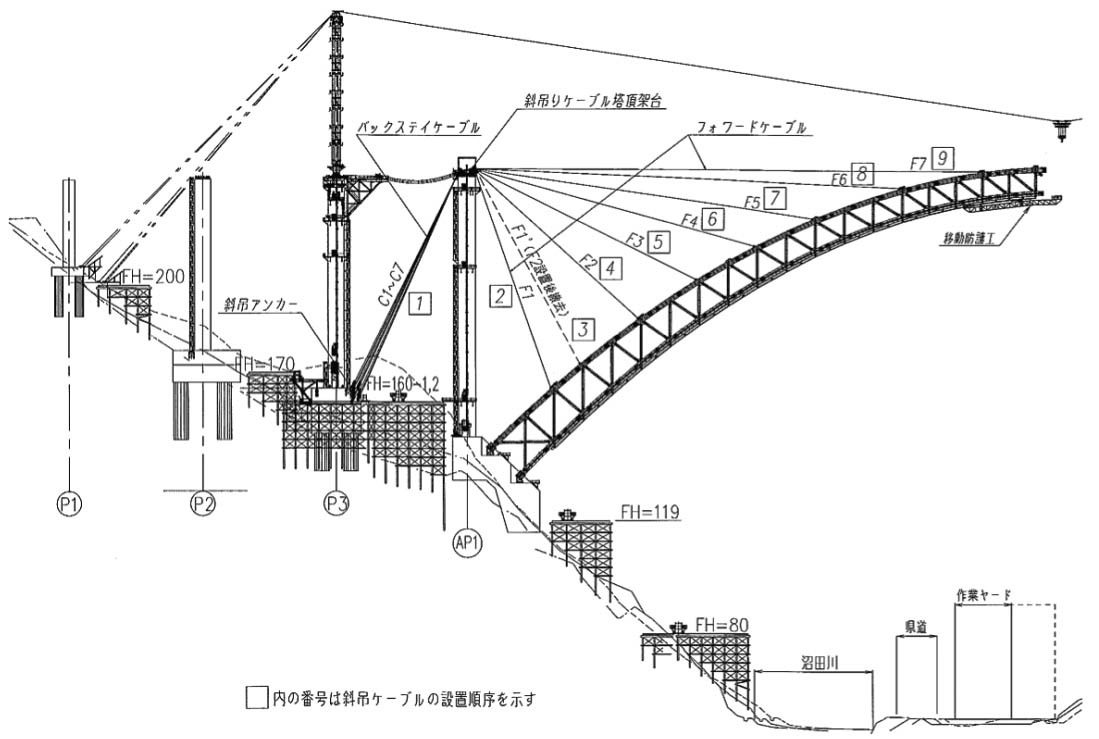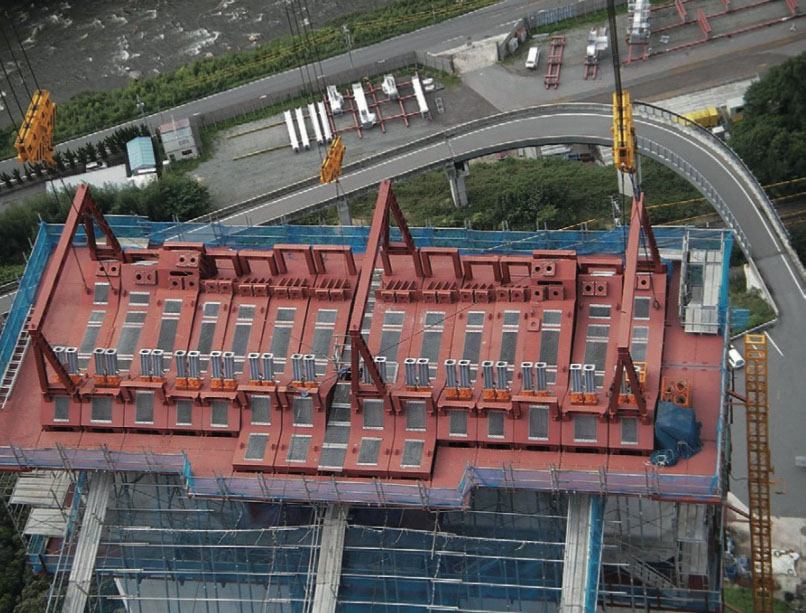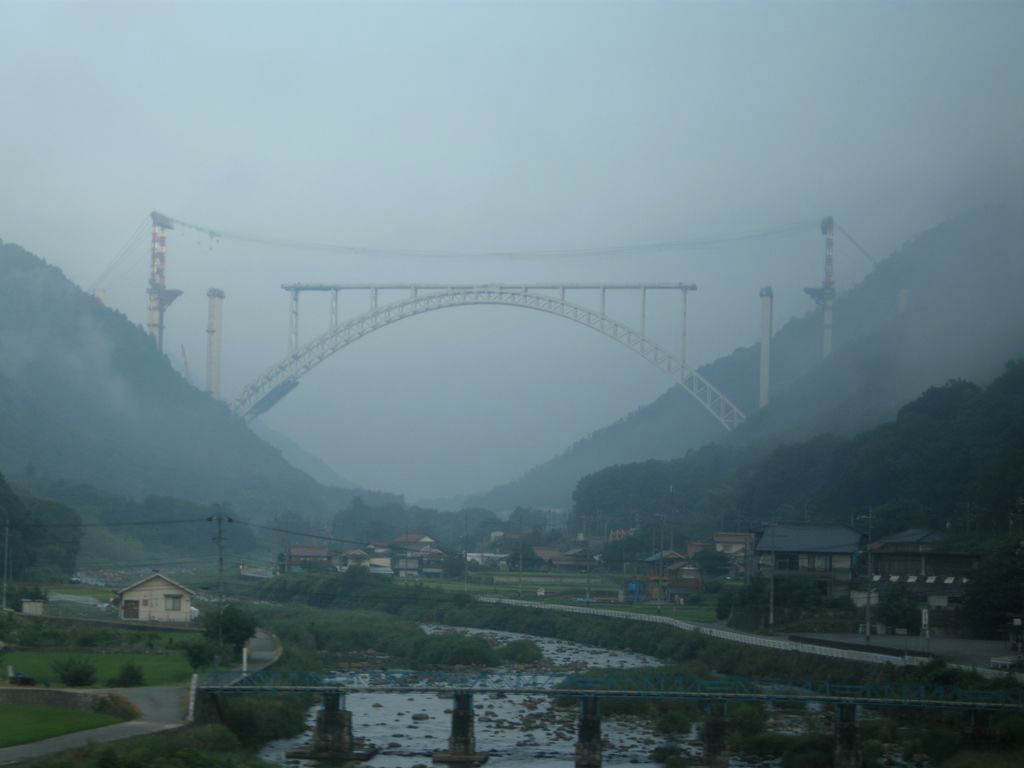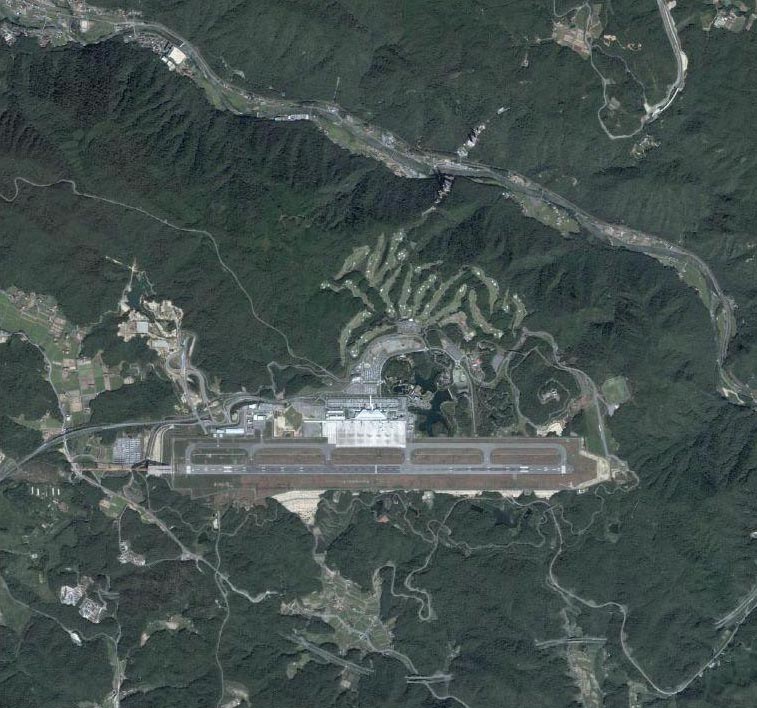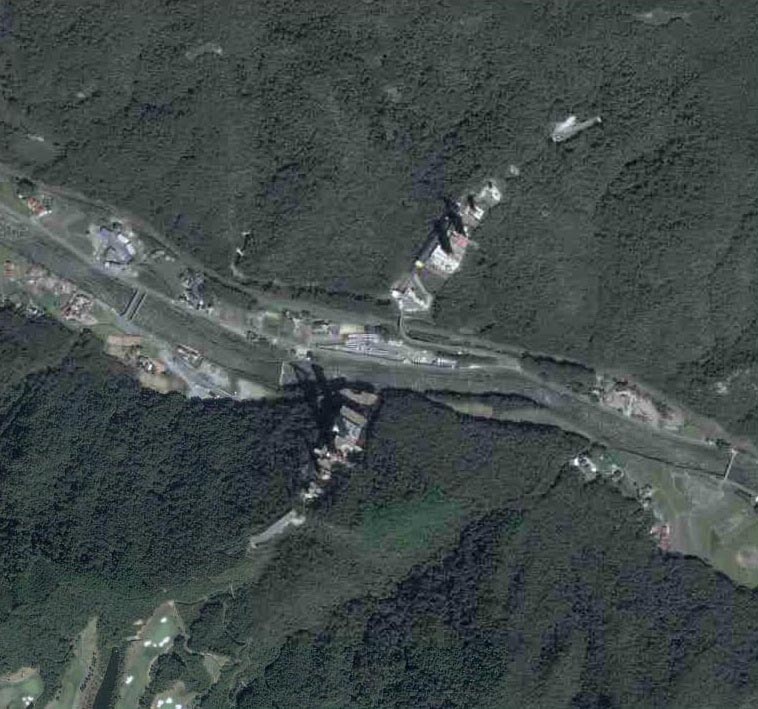Difference between revisions of "Shintabisoko Bridge"
(Created page with '<div style="font-size: 25px; text-align: center;"> Shintabisoko Bridge<br /> 広島空港大橋<br /> Nuta River Bridge<br /> Hiroshima, Japan<br /> 640 feet high / 195 meters hi…') |
|||
| Line 1: | Line 1: | ||
<div style="font-size: 25px; text-align: center;"> | <div style="font-size: 25px; text-align: center;"> | ||
Shintabisoko Bridge<br /> | Shintabisoko Bridge<br /> | ||
| − | + | 新旅足橋<br /> | |
| − | + | Yaotsu, Gifu, Japan<br /> | |
| − | + | 656 feet high / 200 meters high<br /> | |
| − | + | 722 foot span / 220 meter span<br /> | |
| − | |||
2010<br /> | 2010<br /> | ||
| − | [[File: | + | [[File:Shin.jpg|750px|center]] |
| − | </div> | + | </div>. |
| − | + | ||
| + | Opened on January 15th, 2010, the Shintabisoko Bridge became the highest bridge ever in Japan and the first in the country to exceed 200 meters in height. Built as part of a new bypass for route 418, the original road was an unmaintained series of serpentine twists and turns in a mountainous region of Gifu prefecture. The construction of the Shin-Maruyama Dam also made the new highway a necessity as parts of the old 418 were inundated under the reservoir. An arm of this new lake is located under the new bridge. With a full reservoir depth of about 50 feet (15 mtrs) beneath the bridge, the height of the deck over the water is approximately 607 feet (185 mtrs). Some may feel that this still leaves the Hiroshima Airport bridge as Japan's highest with a deck to water height of approximately 640 feet (195 mtrs). But all dams have periodic drawdowns from a lack of rain as well as maintenance so from time to time the Shintabisoko bridge will be 200 meters high. | ||
| − | + | The bridge was constructed using the cantilever method and the 2-lane, single cell box girder has a depth of 17 feet (6 mtrs) in the center and 43 feet (13 mtrs) over the piers. | |
| − | |||
| − | |||
<div style="text-align: center; font-size: 25px;"> | <div style="text-align: center; font-size: 25px;"> | ||
| − | [[File: | + | [[File:ShintabisokoBridgeElevFinal.jpg|750px|center]]<br /> |
| − | + | Shintabisoko Bridge Elevation<br /> | |
</div> | </div> | ||
| − | |||
| − | |||
| − | |||
| − | |||
| − | |||
Revision as of 23:24, 21 January 2010
Shintabisoko Bridge
新旅足橋
Yaotsu, Gifu, Japan
656 feet high / 200 meters high
722 foot span / 220 meter span
2010
.
Opened on January 15th, 2010, the Shintabisoko Bridge became the highest bridge ever in Japan and the first in the country to exceed 200 meters in height. Built as part of a new bypass for route 418, the original road was an unmaintained series of serpentine twists and turns in a mountainous region of Gifu prefecture. The construction of the Shin-Maruyama Dam also made the new highway a necessity as parts of the old 418 were inundated under the reservoir. An arm of this new lake is located under the new bridge. With a full reservoir depth of about 50 feet (15 mtrs) beneath the bridge, the height of the deck over the water is approximately 607 feet (185 mtrs). Some may feel that this still leaves the Hiroshima Airport bridge as Japan's highest with a deck to water height of approximately 640 feet (195 mtrs). But all dams have periodic drawdowns from a lack of rain as well as maintenance so from time to time the Shintabisoko bridge will be 200 meters high.
The bridge was constructed using the cantilever method and the 2-lane, single cell box girder has a depth of 17 feet (6 mtrs) in the center and 43 feet (13 mtrs) over the piers.
The massive scale of the arch can be seen from the small-looking maintenance stairs.
Image by Japanese Bridge Association.
Image by Japanese Bridge Association.
Construction plan showing the highline towers 1,640 feet (500 meters) apart. Image by Japanese Bridge Association.
Temporary cable stay construction plan. Image by Japanese Bridge Association.
Image by Japanese Bridge Association.
Hiroshima Airport Bridge satellite image.
Hiroshima Airport Bridge satellite image. The southern tunnel goes under the edge of the airport golf course.

